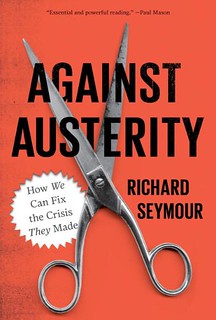Tuesday, October 27, 2009
Crisis and recovery: myths about China posted by Richard Seymour
ARE WE IN A RECOVERY? Well, there’s certainly lots of talk of “green shoots” and the head of the IMF said on Saturday that “just now we see the beginning of the end of the crisis, predicting that the world will return to growth this year and by next year global growth will be around 3 percent. Is it true? Any talk of global recovery needs to start by looking at two key places – China and the USA. The two countries are locked together in an unwilling but interdependent dance from which neither can escape. The USA is China’s largest trading partner with 21 percent of China’s exports going to the US and almost eight percent of its imports coming from there. In the US, China is now the USA’s number 1 trading partner, representing up to 19 percent of total trade vs Canada’s 14.5 percent. Until last year Canada was the biggest trading partner.
This is significant for a few reasons. First, because exports are still key to China’s growth, with its balance of payments surplus accounting for 10 percent of China’s GDP. In real terms that means that China sells $300 billion per year more than it buys on the world market. It is a key component of China’s growth rates, which have hovered around the 10 percent mark. Having such a high balance of payments surplus has meant that China can invest heavily in growing its economy. It’s rate of investment is a whopping 43 percent of GDP, compared to about 16.5 percent in the United States and 23.1 percent in the EU. But it’s also meant that China can buy up American debt – it holds close to $800 billion in US debt – in a process of debt cycling that helped fund the 2003-2007 boom. It was as though the US borrowed money from China to pay for stuff that it was buying from China. And China lent money to the US that it had made by selling the US goods from its factories. Right wing historian Niall Ferguson labeled this cycle “Chimerica”. What was really happening, of course, was that by continuing to buy up US government securities they simultaneously kept US interest rates low – thus helping to fund the consumer debt boom – and also kept the US dollar high, making Chinese exports cheap.
It was a virtuous cycle until the bubble got too big. It is now in the process of becoming a negatively reinforcing cycle: the collapse in US imports is driving down China’s trade surplus, and the massive quantity of US debt is driving down the US dollar, which is making it less attractive as a reserve currency and threatens to push up US interest rates. The Chinese have stated on a number of occasions that they are concerned by US debt levels, levels that they were happy with in the past when it meant the sales of Chinese goods. In March, Premier Wen Jiabao made some very bald statements at the end of the closing of China’s legislative session:
“We have made a huge amount of loans to the United States. Of course we are concerned about the safety of our assets. To be honest, I'm a little bit worried... I would like to call on the United States to honor its words, stay a credible nation and ensure the safety of Chinese assets.”
But the Chinese can do little more than express concern. They know that ending the present round of massive stimulus spending in either country would be a disaster, since it is all that is propping up the anemic growth in the US and accounts for perhaps half of the growth in China. At a joint two-day conference between China and the US in July, China made the ritual noises about getting the deficit under control but then re-emphasized that now is not the time to stop deficit spending to stimulate the economy. As Peterson Institute economist, Ted Truman, put it:
“They don't want the U.S. economy to collapse because they are highly dependent on the U.S. economy in terms of economic activity and ... because they have a lot of their financial eggs in this basket.”
The result of the present crisis and the interdependent negative effect it has had on China and the US is leading to a number of processes. China is desperately trying to avoid a slowdown in growth. Anything below about 8 percent will cause a rise in unemployment and, it is feared, a growth in unrest – already in good supply. But with China pumping cash both directly through state investment and indirectly through a rapid expansion of lending – at 34 percent, or four times the rate of GDP growth – there is a serious danger of both an asset bubble and massive over capacity as plant comes online with insufficient global markets to absorb the increase in supply. With US retail sales stagnant and GDP in the European Union expected to shrink this year by four percent, the only hope for China beyond government stimulus that is expected to end after 2010 is to develop domestic consumption.
Recent statistics, for instance showing a 16.5 percent growth in retail sales and a whopping 34 percent growth in auto sales, seem to suggest that this is happening. However, these stats are largely for foreign consumption and for the central state paymasters of regional bureaucrats. In other words they are, at best, manipulated and are often outright fabrications. But even where there has been a growth in domestic demand, much of it either includes increased government expenditure or one-off incentives as part of the government stimulus package. The real problem is that rather than rising, household consumption in China is falling – from 47 percent in 2000 to around 30 percent today, a massive decline. What this suggests is that in the medium term shifting China’s economic priorities to develop domestic demand looks like an unlikely proposition for a number of reasons laid out in an article by Michael Pettis in Nouriel Roubini’s Global Economic Monitor. As he notes there are a number of structural and policy limitations to the growth of Chinese consumption:
“• An undervalued currency, which reduces real household wages by raising the cost of imports while subsidizing producers in the tradable goods sector.
“• Excessively low interest rates, which force households, who are mostly depositors, to subsidize the borrowing costs of borrowers, who are mostly manufacturers and include very few households, service industry companies or other net consumers.
“• A large spread between the deposit rate and the lending rate, which forces households to pay for the recapitalization of banks suffering from non-performing loans made to large manufacturers and state-owned enterprises.
“• Sluggish wage growth, perhaps caused in part by restrictions on the ability of workers to organize, which directly subsidizes employers at the cost of households.
“• Unraveling social safety nets and weak environmental restrictions, which effectively allow corporations to pass on the social cost to workers and households.
“• Other direct manufacturing subsidies, including controlled land and energy prices, which are also indirectly paid for by households
“By transferring wealth from households to boost the profitability of producers, China’s ability to grow consumption in line with growth in the nation’s GDP was severely hampered.”
While Pettis hits the producerist nail on the head, he fails to mention the contradictions that prevent the Chinese state from truly shifting towards a consumerist model. As I discussed above, the Chinese state is deadly terrified of a rise in unemployment and believe that an eight percent growth rate is necessary to absorb migration from the countryside to the cities. Shifting economic priorities towards developing domestic consumption necessarily means reducing the very high rate of investment and providing an increase in wages, social services, etc. For instance it was reported at the end of October that investment accounted for nearly 88 percent of GDP growth. Cutting back investment and redirecting that money to consumption would, at least in the short term, lead to a substantial increase in unemployment. However, the export-led model has its own drawbacks, not least of which is that the Chinese economy is vulnerable to drops in external demand. And the Chinese state can’t provide any direct stimulus to counteract such a pullback. The result of that vulnerability has been made clear in the present recession.
“Between January and September, China's exports fell by 21.3 percent compared with the same period in 2008. The country's total trade with the European Union dropped 19.4 percent while trade with the US and Japan declined 15.8 percent and 20 percent respectively, according to the General Administration of Customs.”
There is also great pressure from the Americans – and others - for China to increase domestic consumption because the USA can’t continue forever to be the repository for Chinese exports. The American ruling class is increasingly nervous about Chinese control of the US debt, which implies a vulnerability to Chinese pressure of US policy. That means that there must be reversal in US indebtedness – and thus an increase in exports and saving. Barbara Hackman Franklin, Bush Sr.’s former Director of Commerce, summarized the viewpoint recently, stating that:
"The US must increase savings and be less consumption-led and that China must become more consumption oriented and less dependent on exports”
But, if anything, China is doing the opposite. Its policy of pegging the Yuan to the US dollar means that as the dollar has declined to more normal pre-crisis levels, China’s currency has also declined. This is, in effect, a devaluation that hinders the US, desperate to overcome its trade deficits, from doing so. As Paul Krugman noted in the New York Times on October 23:
“By pursuing a weak-currency policy, China is siphoning some of… [the already deeply depressed] demand away from other nations, which is hurting growth almost everywhere.”
Yet, in the face of this policy the US administration is, if anything, becoming more conservative in confronting China on its currency. Back in January during hearings on his nomination as Treasury Secretary, Tim Geithner accused China of currency manipulation – a very big accusation that would have meant (if it was sustained after his confirmation) that the US would have to take action against China including, possibly, sanctions. But by October 15 the Treasury Dept under Geithner was singing a different tune in its report to Congress, saying that, while China’s currency was undervalued, it was not being manipulated. Krugman’s response was, “they’re kidding, right?”
But the Obama Administration is not kidding and for very good reasons. If China were to start selling it’s US dollar reserves in a big way it would lead to a much more dramatic decline in the dollar. That would put serious
upward pressure on interest rates as the US government found it more difficult to raise funds in bond markets. While a lower dollar would make US exports more attractive, the combination of higher interests rates and higher import costs – particularly energy – would choke off the feeble recovery and likely lead to stagflation. It would also prick the asset-bubble that is the New York stock market, awash in bailout cash, further depressing the economy. So, expect explicit discussion of currency manipulation to remain taboo. And while the Chinese aren’t happy about all their dollar holdings being worth less every day as the US dollar slides, they aren’t unhappy about their currency devaluing along with it, making their exports cheaper. However, doing nothing – which seems to be the better part of both countries’ present strategy – has a price. For China, it means a continuing decline in the buying power of the Chinese consumer as the cost of imports rise from everywhere but the US. This will make China further dependent upon exports to keep the economy growing, which will also make it vulnerable to factors beyond its borders and thus beyond its control. And as it buys less and sells more it not only has the effect of slowing growth elsewhere, thus undermining its market, it raises the possibility of protectionism. In its trade with the European Union, China had a trade surplus of €170 billion in 2008. The US, by contrast, had a trade deficit of €80 billion. It will be more politically palatable for recession-bound Europe to accept a decline in trade surplus than to see its deficit with China increase. One wonders if America’s weak dollar strategy isn’t, in part, to get Europe to put pressure on China to revalue its currency.
By looking at come of the contradictions faced by the Chinese economy, it begins to look less unassailable than the media is prone to represent it. And it is less the case that China is obstinately refusing to revalue the renminbi than that China has grown itself into a corner, so to speak. With asset-prices rising and the risk of a housing bubble on one side, along with a major crisis of overproduction looming on the other, China must navigate between the rocks of multiple economic dangers and the charybdis of urban and rural revolt that could destabilize the carefully built edifice of Chinese capitalism. It's not hyperbolic to say that the future of the world will be dramatically affected by whatever happens there.
Labels: capitalism, china, depression, obama, recession, us economy, wall street










